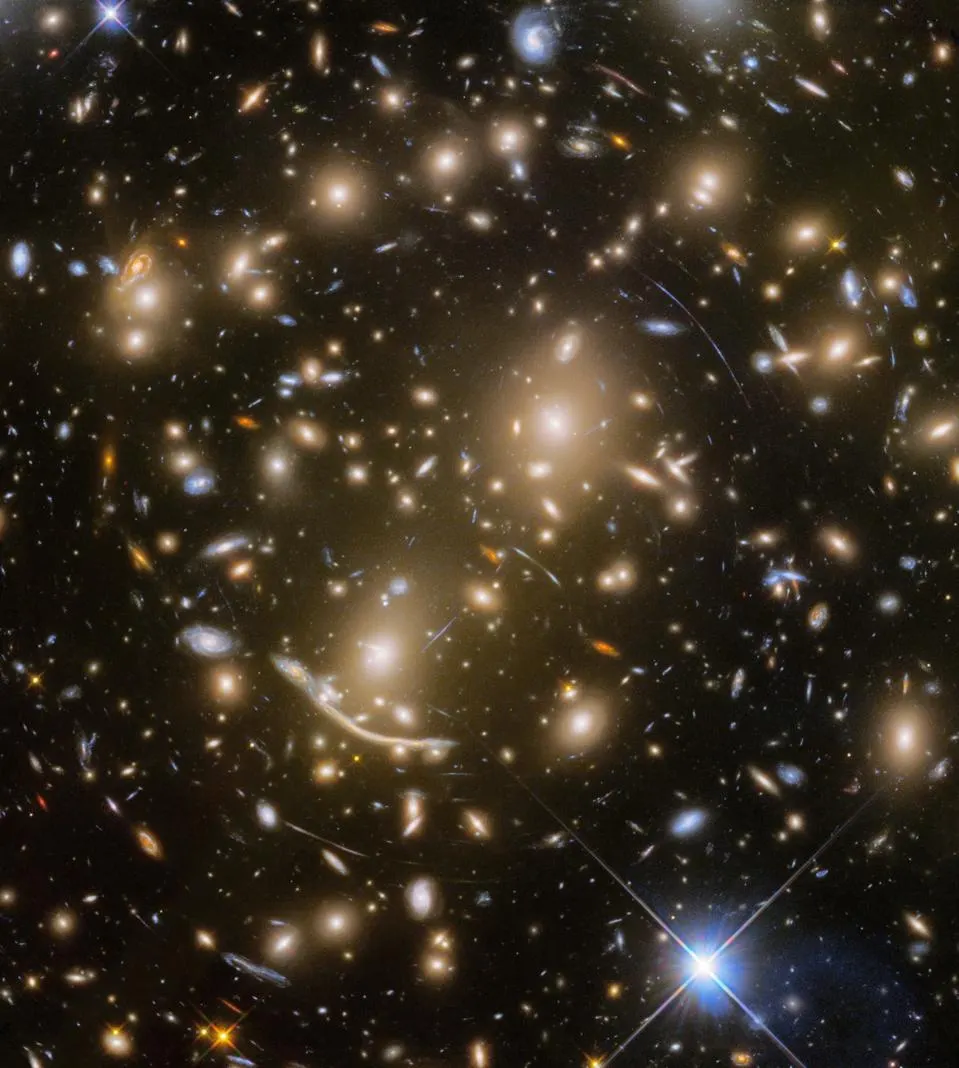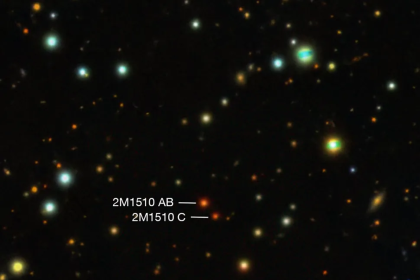Using the James Webb Space Telescope, astronomers discovered more than 40 individual stars in a galaxy 6.5 billion light-years away from the Milky Way. This is the largest number of single stars ever detected in the distant universe.
According to RCO News Agency, Capturing this unique image, which uses James Webb’s high-resolution optics, was only possible because the light from 44 stars in a distant galaxy was magnified by a massive cluster of galaxies called Abell 370 that lay in front of them.
Gravitational convergence
This method, called “gravitational convergence” and also known as the “Einstein ring” due to the prediction of the famous scientist Albert Einstein, occurs when the gravitational field of a foreground space mass distorts the space around it. Light from an object behind it bends into circular rings or arcs, both revealing the presence of mass in the background and, more importantly, magnifying background objects by hundreds or even thousands of times. In this case, an arc was visible, which is called “Dragon Arc”.
In a paper published Monday, January 17 in the journal Nature Astronomy, scientists from the Harvard-Smithsonian Center for Astrophysics in Cambridge, Massachusetts, describe the feat.
A groundbreaking discovery
This groundbreaking discovery shows for the first time that it is possible to study large numbers of individual stars in a distant galaxy, says Fengwu Sun, a postdoctoral researcher and co-author of the paper. While previous studies with the Hubble Space Telescope found about seven stars, we now have the ability to identify stars that were previously beyond our ability to detect.

Astronomers do not expect to see individual stars in galaxies halfway across the visible universe. However, these achievements are not just record breaking. Scientists hope it will help them learn more about dark matter.
Dark matter is what astronomers call hypothetical undetectable and invisible particles. They are thought to make up about 85% of the matter in the entire universe. Although they interact with gravity, they absorb, reflect, and do not emit light or energy. Observing individual stars also helps us better understand the dark matter at the convergence plane of these galaxies and stars, Sun says. Something we couldn’t do with just a handful of stars observed in previous studies.
end of message
RCO NEWS
















